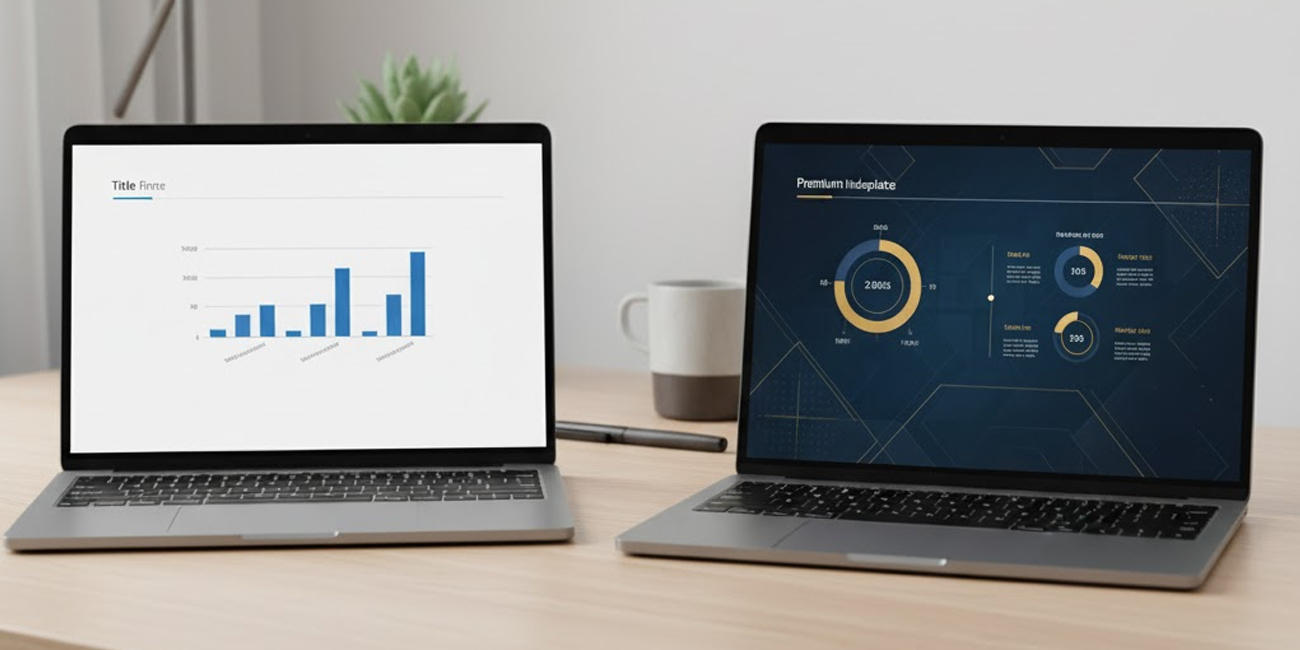Google Slides Template vs. Custom Strategy: The Cost of Compromise

Google Slides promises simplicity, collaboration, and speed — everything a founder needs to pull together a fundraising deck fast. But in venture capital, speed is not a substitute for substance. When millions are on the line, your pitch deck isn’t just a design file. It’s a diagnostic of how your company thinks.
Investors don’t just read your slides; they read between them. A templated deck signals generic thinking. It tells a partner that you approached your fundraise the way you’d assemble a group project — not the way you’d lead a business into Series A. The cost of that impression compounds fast.
Generic Tools Create Generic Thinking
Every visual framework shapes the story it carries. Google Slides templates were built for presentations, not capital strategy. They assume a predictable flow — problem, solution, team, ask — but real venture storytelling demands more than order; it demands insight. When a deck mirrors the same rhythm as every other pitch, investors tune out after slide three.
Custom decks, by contrast, are built from the inside out. They begin with a financial and narrative thesis, not a placeholder layout. The design reflects the founder’s priorities: which growth levers matter, which metrics deserve emphasis, which story threads bind product to market. A template can’t do that because it was never meant to.
Even the layout language of templates betrays the wrong mindset. Default font sizes assume classroom projection, not boardroom precision. Color schemes were chosen for visual balance, not psychological impact. And slide hierarchies often flatten nuance — a killer metric looks identical to filler content. Every one of these cues quietly tells the investor: this founder doesn’t know what deserves weight.
Institutional Investors See the Signal
Venture partners make pattern recognition an art form. The first pattern they detect is effort. A deck built with intention — tailored charts, cohesive narrative, aligned metrics — signals readiness for diligence. A deck that looks like a marketing intern exported it from Slides tells a different story.
Partners know that founders who cut corners in storytelling often cut them in reporting, compliance, and planning. This is why institutional investors notice even small deviations from form. The alignment between your deck’s precision and your operating discipline matters. A polished, bespoke deck isn’t vanity — it’s due diligence in visual form.
In our reviews of post-funding decks, one consistent pattern emerges: those who raise from tier-one firms present data with absolute clarity. They don’t bury assumptions. They frame numbers like arguments. The structure itself becomes an asset — a sign that the company knows how to communicate at the level venture boards demand.
The Cost of Compromise
Using a Google Slides template seems efficient until you trace its real cost. The hours saved in formatting are lost tenfold when an investor questions your credibility. A missed funding round delays milestones, product launches, and recruiting — all because your deck whispered “average.”
The financial cost compounds too. If your first pitch fails to signal readiness, your valuation narrows. That one impression can strip millions in potential equity. Founders often call it “design feedback,” but partners call it “risk assessment.”
Founders who understand this treat their decks like financial models: bespoke, evolving, and strategic. They invest in clarity because clarity converts attention into trust. The difference between a template and a strategy isn’t aesthetics — it’s control.
Your slides are your investor’s first data point. Don’t let convenience frame your ambition.